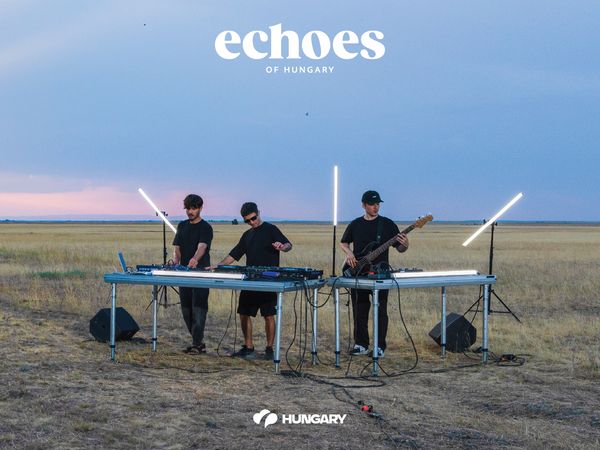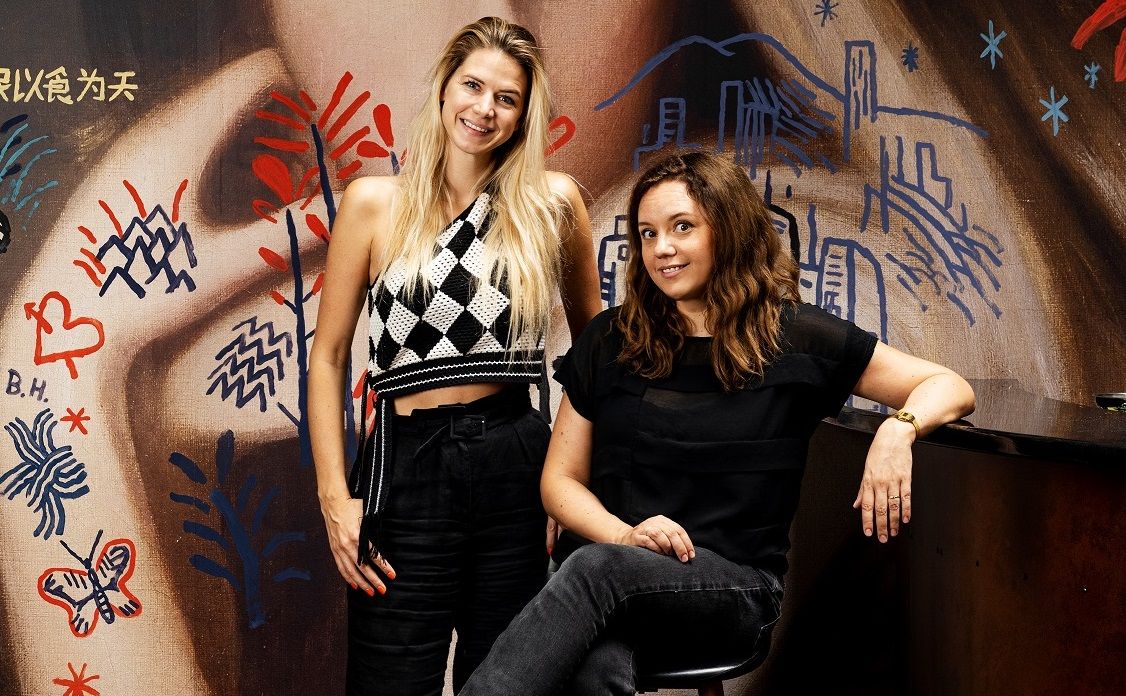When it comes to visual identity and communication, many popular Hungarian food-related businesses have sought out the help of Socially, a Budapest-based gastromarketing agency. With their dynamic attitude, we knew the team wouldn’t stop there, and they haven’t, dreaming up their own restaurant—Badhanna—in an iconic space in downtown Budapest. Making its debut this spring and getting a refreshed menu in September, Badhanna is the latest mystical entity of Budapest, and we had the pleasure to get introduced to the restaurant by the founder of Socially, Sára Varga, and art director Eszter Csontos.
This article was published in print in Hype&Hyper 2022/2.
Photos by Kata Balogh
The work of Socially has always been very diverse: from online marketing to overall branding, you’ve contributed to the success of many food-related businesses in a variety of ways. Would it be safe to say that Badhanna is a milestone in the agency’s life?
Eszter Csontos: Yes, it’s a very important milestone, as we’ve always liked to think in a complex way about our projects, and we believe that the more comprehensive the activities we can carry out, the better the outcome will be. With Badhanna, we had the opportunity to make sure that every detail from the very beginning—the name, the concept, the menu or the interior and lighting of the space—reflected our vision.
Sári Varga: It’s both a milestone and the culmination of the work we’ve done so far. I founded Socially 8 years ago, and initially, we only did online communication, but now we also create visual identities and handle PR and communication, so we cover everything a food-related business might possibly need. Over the years, it’s become clear to me—and the market is moving in this direction as well—that the only way a food experience can be truly impactful and complex is if all the details are pointing in the same direction, and this is the idea we based Badhanna on as well. We were fortunate enough to be given a completely free hand by the owner to work on the atmosphere of the restaurant in the most comprehensive way.
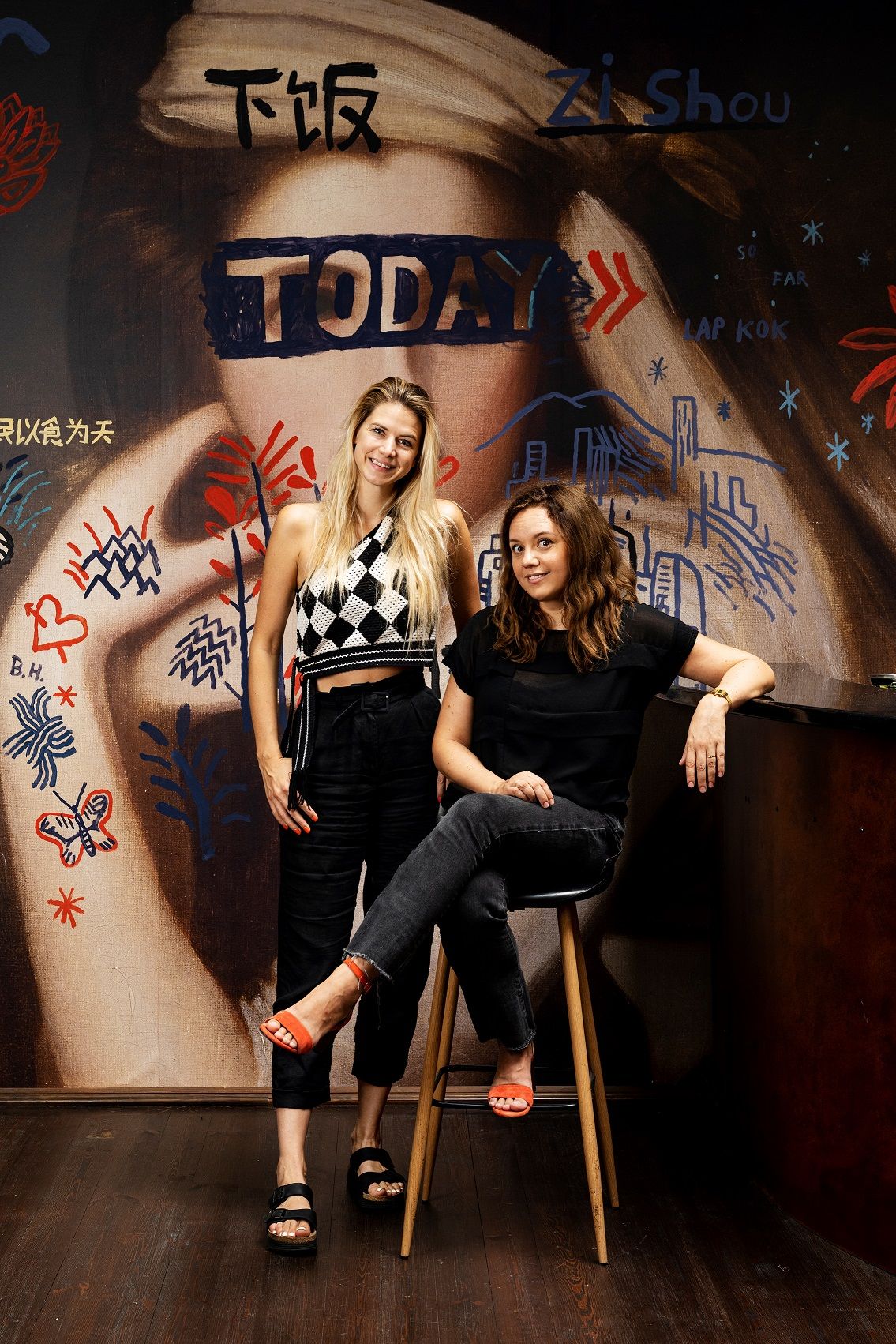
Tell us a bit more about the concept: how did it come together and who is Badhanna?
S.V.: We work on a lot of exciting and complex projects, but for a while now, we’ve been intrigued by the idea of a place that we get to invent from scratch, and with Badhanna, we were finally able to.
Originally, we envisioned a completely different concept under this name that was washed away by the wave of the pandemic. However, owner Márton Vajda liked the name so much that the next step was this new location, with the starting point of coming up with something related to Asia. The aim was to create an atmosphere of freedom through the interior, and the food and drink on offer.
We imagine Badhanna to be a traveller, a very cool, unconventional female figure, through the eyes of whom we get to experience the exciting world of gastronomy and culture.

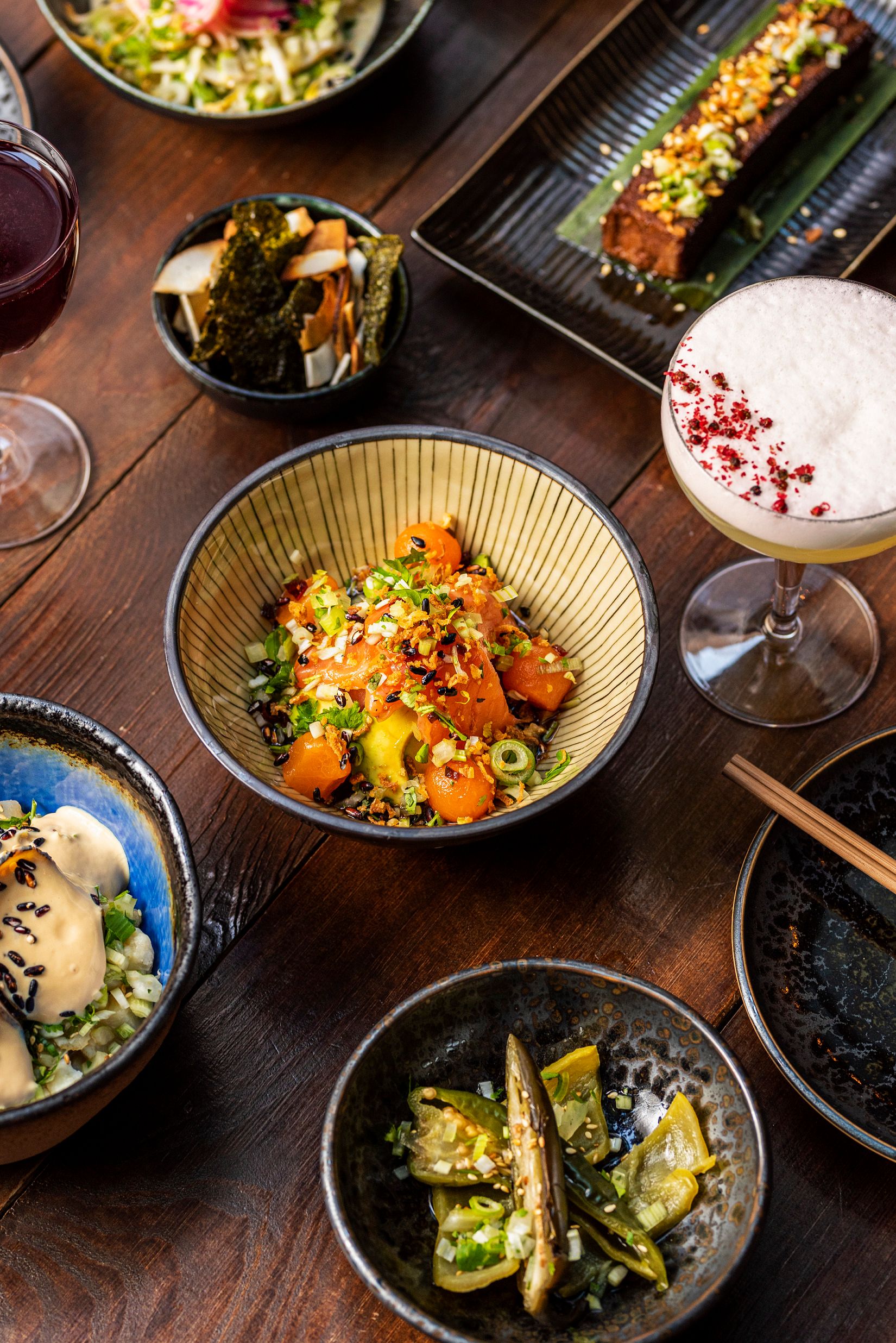
E.CS.: For me, Badhanna is synonymous with freedom. She represents someone who steps outside of her comfort zone to discover something new—and this is exactly what the restaurant offers through flavours and experience. As soon as Sári said the name out loud, I instantly liked it because I felt I could relate to it. As women, we are conditioned to live up to a myriad of societal expectations, and I’ve always been inspired by women who are able to leave them behind. Badhanna encompasses the curious soul who lives according to her own ideas.
I found many articles about female travellers back in the 1800s, setting out to explore Asia and places that were little-known about at the time. I was shocked at how cool they were to embark on such adventures in those times, and it really inspired me. However, when it comes to Badhanna, time and space doesn’t matter. We don’t want to limit her identity: everyone can make up their own minds about who she is.
When designing the restaurant, what specific tools did you use to convey this sense of freedom? Let’s take a look at the visual identity, for example, which in this case also includes the interior design.
E.CS.: We’ve created many visual identities over the years, and although they’re all different, there’s definitely a sense of continuity. With Badhanna, we wanted to bring to life an intimate, diary-like world in its entirety. Straight away, a visual artist I’ve known for a long time, Attila Stark, popped into my mind. He’s also a keen traveller and the sketches he does during his travels are one of the trademarks of his style. We created the visuals together, also inspired by my experiences in Hong Kong.
S.V.: The concept was to evoke a travel diary. Nowadays, we don’t really use them as much, but perhaps we still scribble here and there during a trip, take notes, look at maps etc. We wanted to bring this into the space and Attila, with his wild and free associations, proved to be the perfect choice to bring our ideas into life.
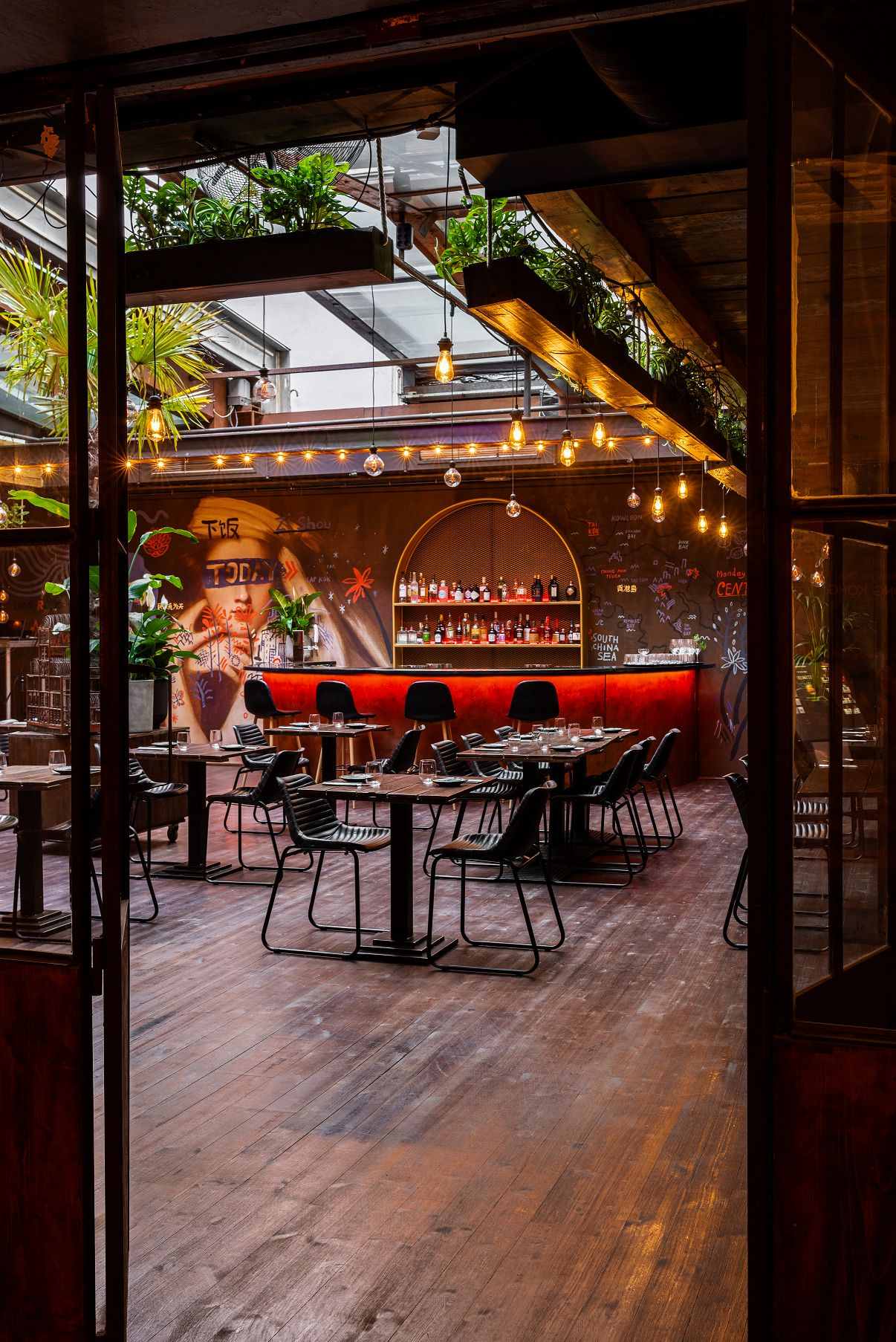
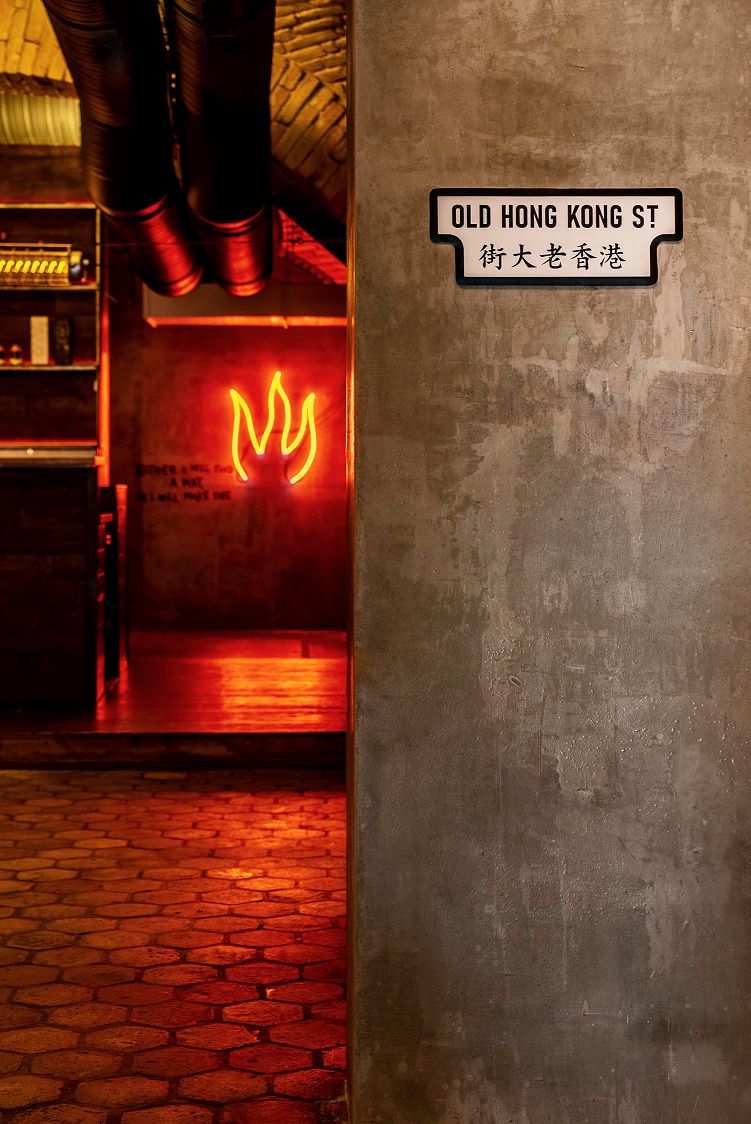
E.CS.: In terms of the space, we wanted to try out something different from classic restaurant interiors. We wanted to bring in the Asian bustle, but without overdoing it, only recalling a few details, like the neon fire, or the wallpapers, which include posters of exhibitions as well as a Japanese travel agency.
S.V.: The architectural design of the space was created by Péter Szendrő, who was also the interior designer of the Trafiq bar that used to be located here. He succeeded in creating something truly lasting, as the space still functions very well. Our task was more in the fine-tuning of details, creating the Badhanna experience with specific textures, wall colour choices, graphics, and lighting. However, what we did change was placing a bar in the center of the space, which is an important part of the concept, as it alters the dynamics and atmosphere of the room.

You also played an important part in designing the menu—how does the menu reflect the freedom we’ve talked about so far?
S.V.: We’ve strived to move away from the traditional restaurant experience where you place your order, it gets brought out, you eat it, and that’s it. Instead, we wanted to put the emphasis on sharing: dining is an experimental experience enjoyed with those you’re with, much like a journey. Sharing works well in Asian gastronomy, as it’s almost a fundamental part of eating, and our menu allows you to order anything at any time—the flavours won’t clash, and the same goes for our drinks. We’ve also made a special point of including a fair number of vegetarian and gluten-free options.
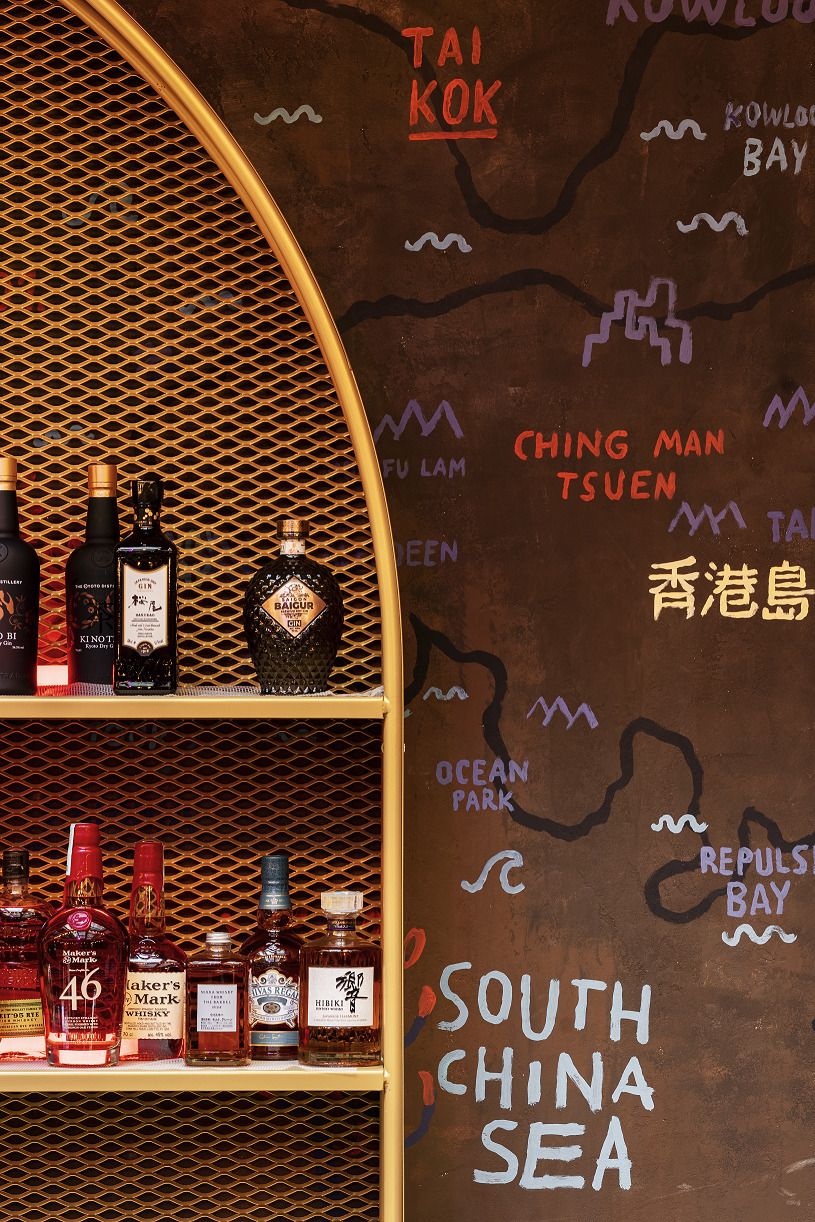
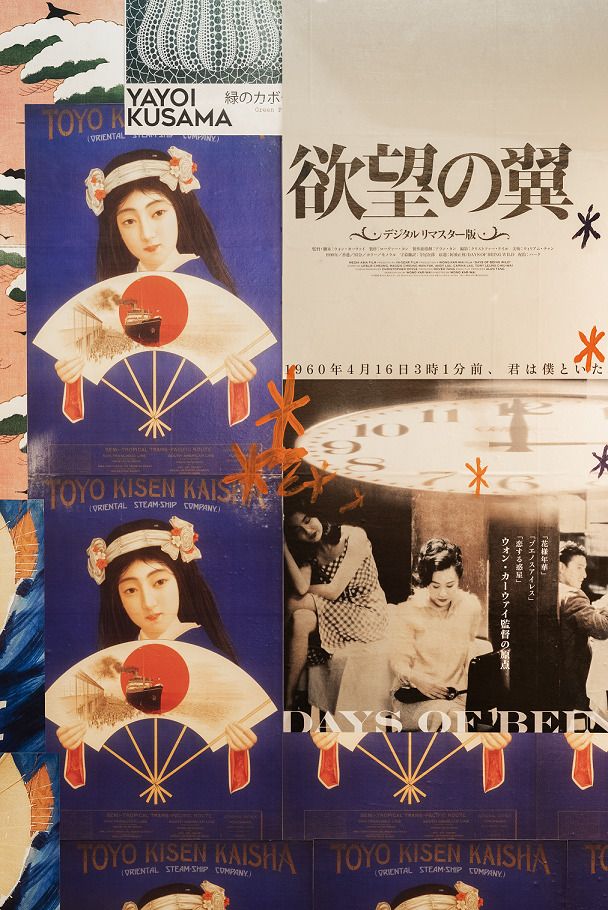
You’ve got a lot of experience, so I’m pretty sure you’re the right person to ask about living the “Good Life!”. In general, what do you think it takes to create that vibe?
S.V: From where I stand, the hospitality industry is going through a huge transformation, and the last two years have been very decisive in this regard. Consumer behaviour has changed significantly: the constraints and over-complexity, which used to be popular in fine dining, for example, are becoming a thing of the past. Now, the social experience is what is important, and that’s what I consider to be the good life, to be able to sit down with someone, in a good atmosphere, and spend an evening without any fuss or constraints, enjoying each other’s company. If this can be topped with outstanding quality food and drink, then that’s when you’ll get a truly memorable experience.
E.CS.: I completely agree. People feel less and less inclined to sit in a restaurant without feeling at ease, and this is especially true for our generation. People appreciate it a lot when they are taken out of their everyday lives and exposed to new experiences and approaches. I would also add, based on personal experience, the importance of an honest and authentic attitude on the side of the owners. If you put your ideas, your heart and soul into a place, it will shine through, and people will relate to it.
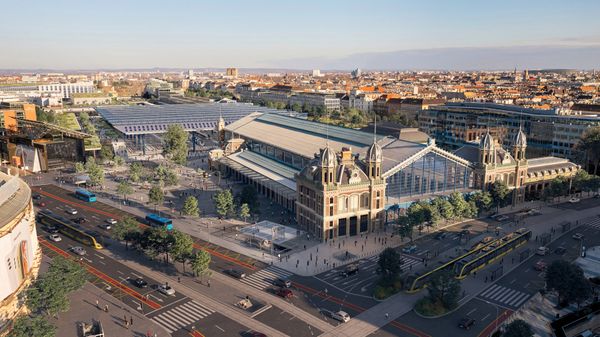
PUBLIC/SPACE—The many faces of Budapest reflected in comprehensive public urban development projects

viennacontemporary opens with exhibitors from Central and Eastern Europe
